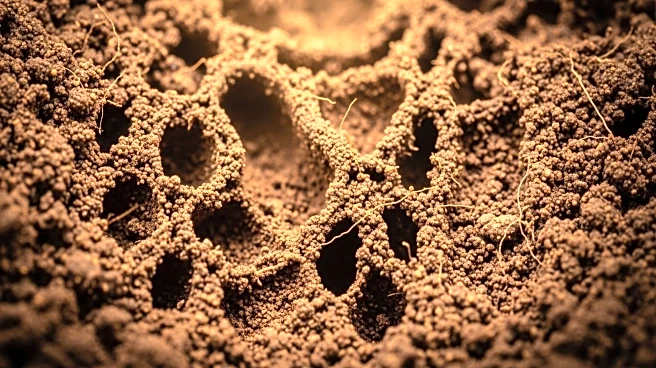What's Happening?
A study published in the Proceedings of the Royal Society B reveals that Neolithic Europeans used birch bark tar extensively for various purposes, including chewing, cooking, and crafting. Researchers analyzed 30 birch tar pieces from nine Neolithic sites
around the Alps, uncovering human, plant, and microbial DNA within the samples. The findings indicate that birch tar was used not only as glue but also for dietary and medicinal purposes, as evidenced by the presence of plant DNA from foods like barley and wheat. The study highlights the versatility of birch tar and its role in preserving DNA, offering insights into the daily lives of Europe's first farmers.
Why It's Important?
The discovery of birch tar's multifaceted use provides a unique glimpse into the technological and cultural practices of Neolithic societies. It reveals how early farmers utilized natural resources to enhance their daily lives, showcasing their ingenuity in transforming native materials into versatile tools and medicines. The preservation of DNA in birch tar offers a valuable resource for understanding ancient diets, health, and social practices, contributing to a more comprehensive picture of human history and evolution.
What's Next?
Future research may focus on expanding the analysis of birch tar samples to other regions, potentially uncovering more about the spread of Neolithic technologies and cultural practices. Scientists might also explore the chemical properties of birch tar that enable DNA preservation, which could have applications in modern conservation techniques. Additionally, interdisciplinary studies combining archaeology, genetics, and chemistry could further illuminate the connections between ancient human activities and environmental adaptations.
Beyond the Headlines
The study highlights the importance of organic residue analysis in archaeology, offering a method to uncover aspects of prehistoric life that are often lost. It also raises questions about the ethical implications of using ancient DNA to reconstruct human history, emphasizing the need for responsible and respectful approaches to archaeological research. The findings underscore the potential for ancient materials to inform contemporary discussions on sustainability and resource management.













